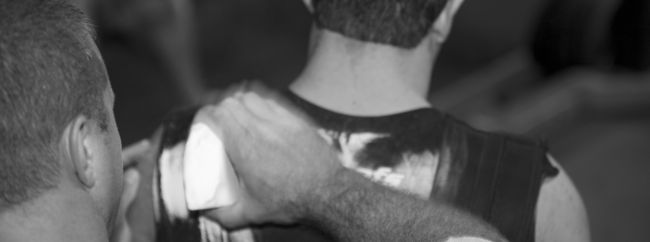
Whether you’re training to get stronger, gain muscle, become better at your sport, or look good at the beach, there is a common denominator—supercompensation. I could probably write an entire book on the law of supercompensation, but I'm not one for lengthy scientific literature, so I'll keep this simple in order to introduce this theory to novices and remind the veterans of something we often lose sight of.
Supercompensation (for our purposes) is basically the process of stressing the body through exercise and allowing it to recover appropriately so it will become stronger, bigger, and faster. This is achieved through a four-step process. The chart below illustrates these steps.
The initial stage refers to your current level of fitness. The second stage is the “training” phase (i.e. what you’re doing or not doing in the gym). The body interprets training as a catabolic stress and always fights to maintain a homeostatic balance. As a result, it works to repair the damage caused by training (third phase is recovery). Once the body has adequately recovered, we enter the fourth and final stage, which is where we want to be. The fourth stage of supercompensation is when your body hasn't only recovered from the training stress that was placed on it but has come back even stronger, bigger, and faster in preparation for future demands.
On paper, this seems very easy to achieve and it might be for the novice (we all remember when we first started to train and gained 20 lbs and put 50 lbs on our bench) because the body will initially respond to any training stress it is placed under. But once you have surpassed that initial gain, that’s when proper programming and recovery come into play.
Training frequency, volume, and intensity are all factors that play into this process. Not only does the musculoskeletal system have to recover and repair, but the endocrine system and the central nervous system must repair themselves as well. If you train too intensely, your body will stay in a catabolic state and you won't be able to sufficiently reach supercompensation. However, if you aren't training with enough intensity (minimal weight) or you aren't training frequently enough, you will no longer stimulate your body to produce further gains. There is a fine line between greatness and failure.
You might be thinking, “Fine, I will just work on my recovery.” That's a great idea, but it won’t cure poor programming. Adequate rest (enough sleep and time between training days), proper diet (healthy food choices and a sufficient quantity of food), hydration, soft tissue work (foam rolling), stretching (dynamic and static), contrast showers (this is a highly debated topic), and GPP work are all means of improving recovery and pushing from the third phase to supercompensation.
Whatever your training goals may be, they can’t be optimally achieved without reaching supercompensation. If we just go through the motions in the gym or constantly beat ourselves down with the “more is better” philosophy, we will never reach the goals we're hoping to achieve. As professional natural bodybuilder and raw powerlifter Dr. Layne Norton has said, “Many people get results in spite of what they do not because what they do is optimal.” Focus on supercompensation when planning your next training cycle.









